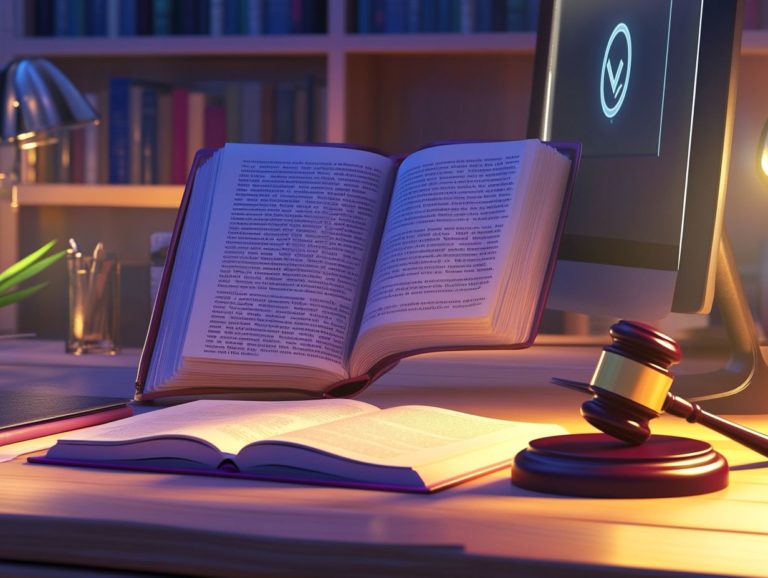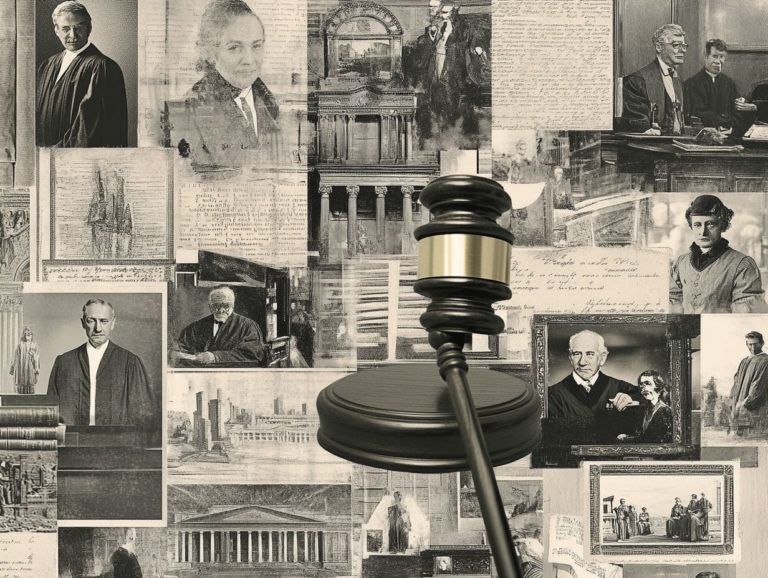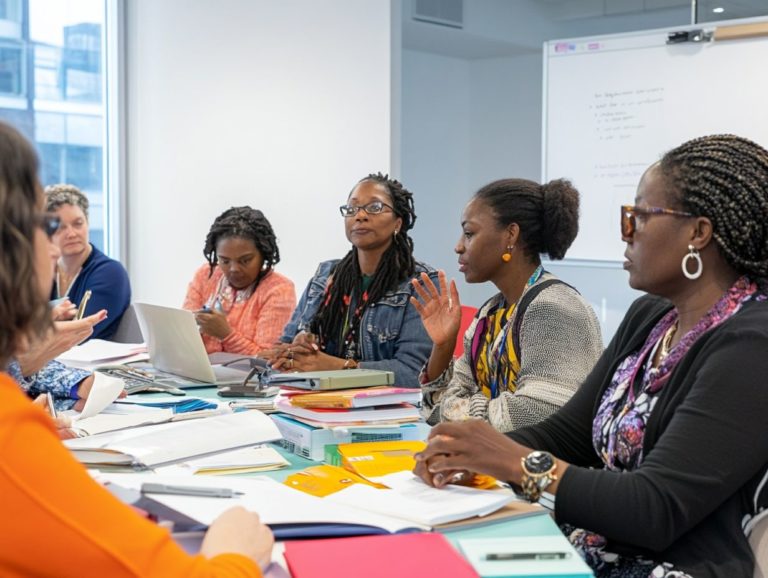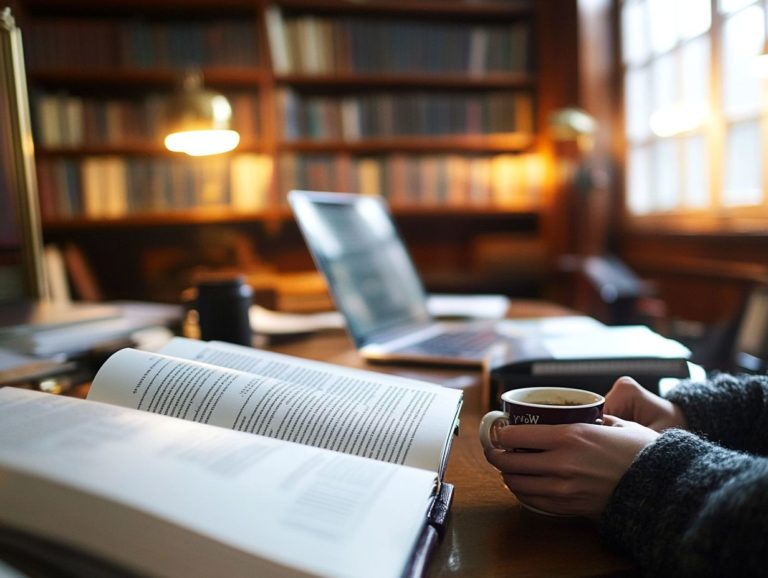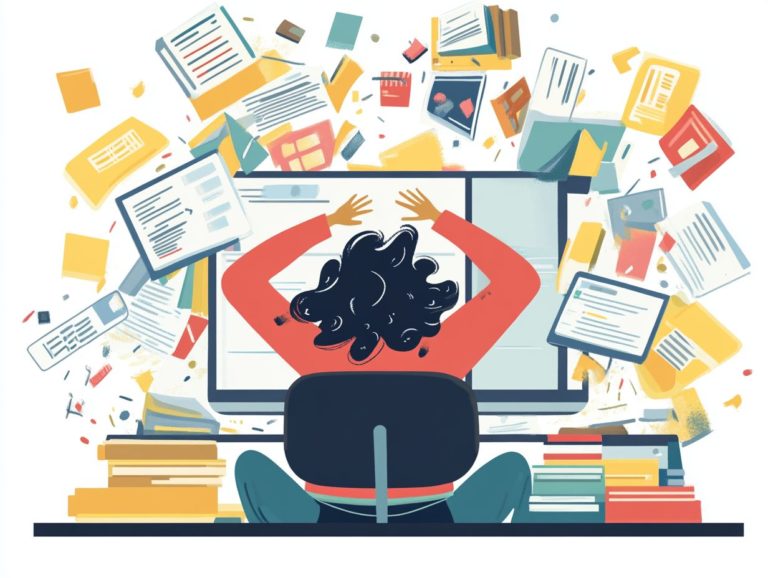How to Use Copyrighted Material Legally
Navigating the complex area of copyright laws can feel overwhelming. However, understanding these regulations is essential for anyone involved in creative work.
This article breaks down copyright, explaining what it is and how it protects your creations. You’ll explore the concept of fair use with real-world examples and learn how to obtain permission for using copyrighted content.
We will also introduce alternatives like public domain resources and highlight the importance of creating original works. You ll uncover the potential consequences of copyright infringement.
By the end, you will feel confident in engaging with copyrighted material legally.
Contents
- Key Takeaways:
- Understanding Copyright Laws
- Fair Use and Copyright
- Obtaining Permission to Use Copyrighted Material
- Alternatives to Using Copyrighted Material
- Consequences of Copyright Infringement
- Preguntas Frecuentes
- Qu es el copyright y por qu es importante al usar material legalmente?
- C mo puedo saber si algo tiene copyright?
- Puedo usar material protegido por derechos de autor si le doy cr dito al creador original?
- Qu es el uso justo y c mo se aplica al uso legal de material protegido por derechos de autor?
- Puedo usar material protegido por derechos de autor si lo modifico o uso solo una peque a parte de l?
- Cu les son algunas alternativas legales para usar material protegido por derechos de autor?
Key Takeaways:
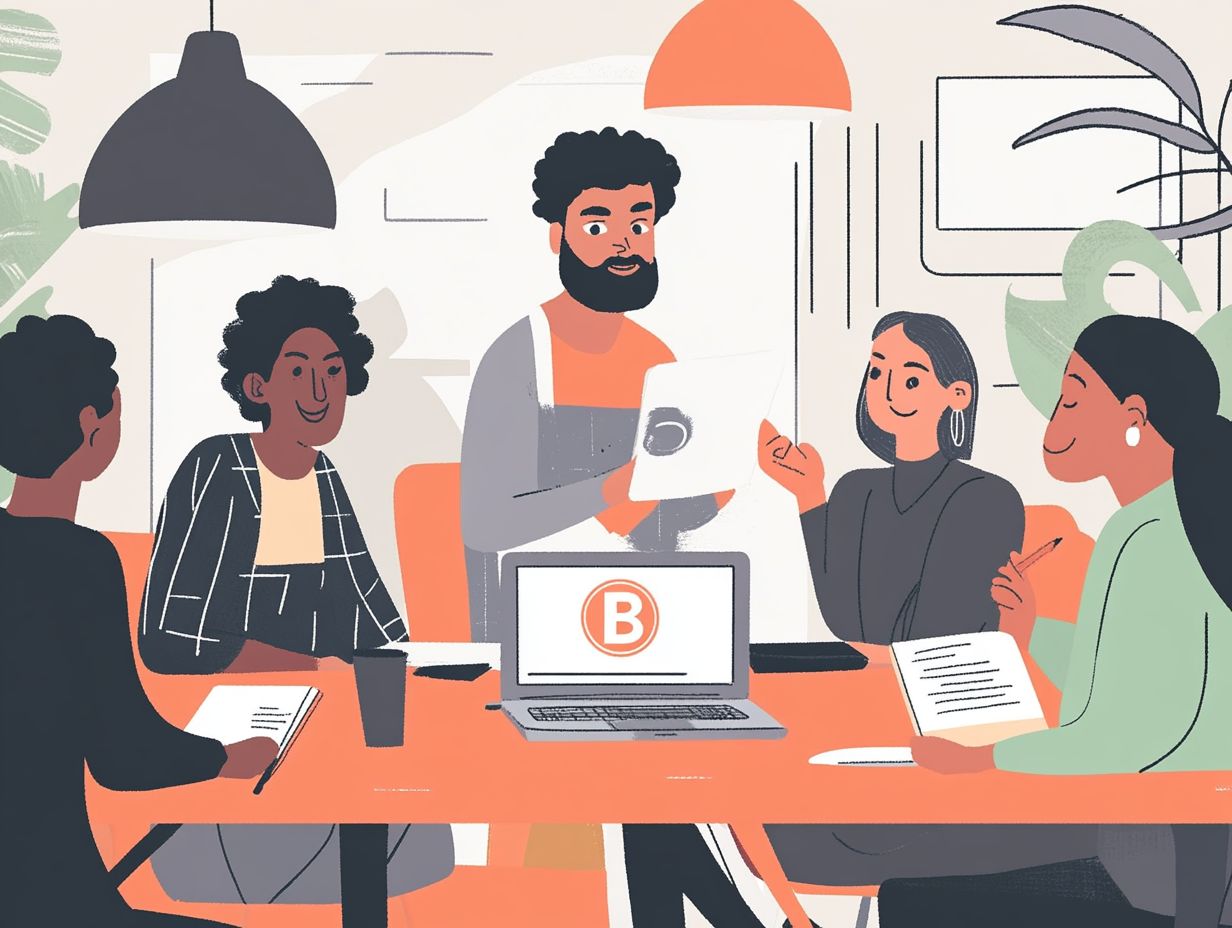
Understand what copyright is and how it protects your work to avoid infringement. Familiarize yourself with fair use guidelines and only use copyrighted material for specific purposes. If unsure, obtain permission from the copyright holder or consider public domain material or creating original content.
Understanding Copyright Laws
Understanding copyright laws is vital for anyone involved in creating, distributing, or using creative works in the United States. These laws protect the rights of creators while balancing public interests, especially in education.
The U.S. Copyright Office outlines the legal frameworks governing copyright protection. This includes rules for derivative works and the TEACH Act, which allows the use of copyrighted materials in distance education.
As educational institutions work to maintain integrity and avoid copyright infringements, mastering copyright law is essential.
What is Copyright?
Copyright gives creators exclusive rights to their original works. This encompasses literary masterpieces, stunning artworks, and catchy songs.
This legal framework protects your intellectual property, allowing you to control how your creations are used and to earn financial rewards.
Copyright applies to various media formats, including books, films, software, and online content. It covers a wide range of works, such as sound recordings, architectural designs, and visual art.
It also sets a specific duration for these rights, usually lasting your lifetime plus a number of years. By protecting these rights, copyright law encourages innovation and creativity in society.
How Does Copyright Protect Material?
Copyright protection serves as a shield for creators, preventing unauthorized copying, distribution, and public display of their works. This ensures effective rights management and keeps your proprietary information secure.
To enforce these rights, consider registering your works with the U.S. Copyright Office. This creates a public record that supports your ownership claims.
This registration is not just a formality; it serves as strong evidence of ownership and provides access to legal remedies if infringement occurs.
Many individuals seek legal advice to navigate copyright law. These experts offer valuable insights on best practices for protecting creative assets.
Whether drafting licensing agreements or implementing rights management strategies, they help you monitor and control the use of your copyrighted materials.
Fair Use and Copyright
Fair use is a legal concept that allows limited use of copyrighted material without asking for permission. It is especially relevant in education, criticism, commentary, or research, promoting academic integrity.
The TEACH Act specifies conditions under which educators can use copyrighted materials in distance education without violating copyright laws.
Understanding these frameworks is vital for both educators and students. This knowledge helps you navigate creative works without risking copyright infringement.
Defining Fair Use
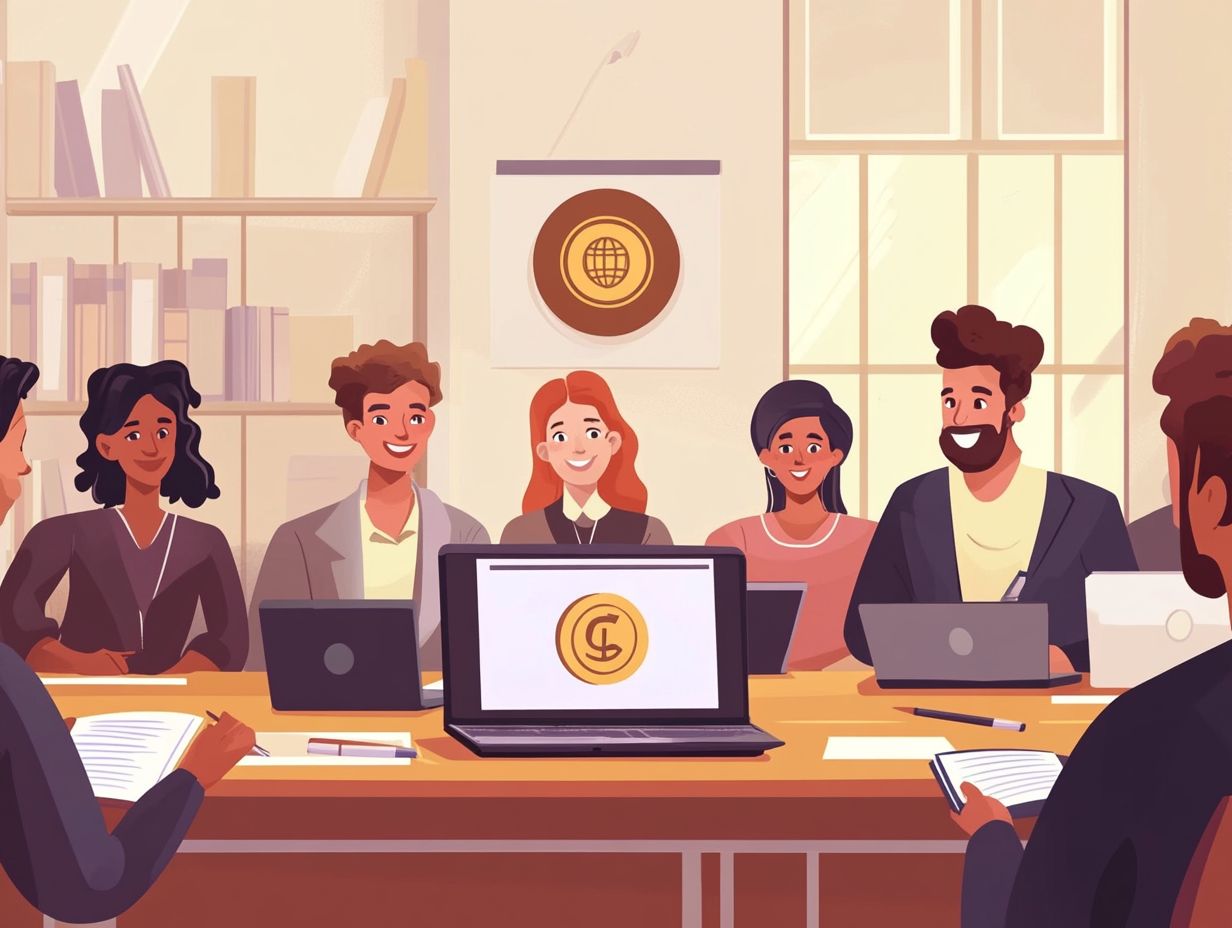
Defining fair use requires you to grasp the four established factors that courts consider when determining whether your use of copyrighted material is permissible under copyright law. This is particularly important in educational settings.
These factors are essential for guiding both educators and students as they navigate the complexities of copyright.
-
First up is the purpose and character of your use. Non-commercial educational uses like incorporating small clips from a film into your lessons tend to lean towards fair use.
-
Next, consider the nature of the copyrighted work. Using factual content generally strengthens your fair use argument more than relying on creative works.
-
The third factor looks at the amount used. Quoting a few lines from a textbook usually suffices, while using an entire chapter could cross the line into infringement.
-
Finally, think about the effect on the market. If your use doesn t negatively impact the sales of the original work, it may qualify as fair use.
By understanding these dynamics, you can respect copyright while enriching your learning experiences!
Examples of Fair Use
Examples of fair use are evident in various educational practices. Quoting short excerpts from published works for scholarly reporting enables you to share knowledge while respecting copyright law.
Educators often enhance class discussions by incorporating short clips from films or documentaries. This approach truly enhances learning when these clips are analyzed or critiqued in an educational setting!
Another common practice involves using copyrighted images in presentations, provided they are credited and used to support specific learning objectives.
When creating course materials, educators might include brief snippets from literature or music. This fosters critical thinking and creativity while demonstrating compliance with copyright regulations.
Obtaining Permission to Use Copyrighted Material
Securing permission to use copyrighted material is essential for educators, students, and professionals when using teaching materials. This not only ensures compliance with copyright laws but also helps you avoid the pitfalls of copying without permission.
Taking this precaution shows respect for intellectual property and enriches the educational experience!
When is Permission Required?
Permission is essential whenever you want to use copyrighted materials in ways that exceed what copyright law allows. This includes reproducing, distributing, or publicly displaying works without the necessary authorization.
If you plan to include a photograph found online in a presentation or share a song at an event, securing permission from the copyright holder is crucial. Doing so honors the creator s rights and helps you avoid potential penalties.
Copying without permission can lead to hefty fines and even legal action. This underscores the importance of understanding the legal implications tied to infringement. While using materials in educational settings comes with guidelines, those don t cover every scenario, so tread carefully!
Ultimately, approaching copyright laws with diligence ensures that you use materials ethically while protecting yourself from potential legal complications.
How to Obtain Permission
To obtain permission for using copyrighted material, start by identifying the copyright owner. Then, formally request usage permission, detailing how you intend to use the material.
This initial step establishes the foundation for effective communication, which is crucial throughout the process. Once you’ve pinpointed the owner, craft a well-structured request outlining your intended usage, duration, and any relevant context to show your respect for their work.
Clear communication minimizes misunderstandings and nurtures a positive relationship with the copyright holder. Don t forget to document this correspondence; it could be invaluable for future reference or legal purposes!
In more complex situations, bringing in legal counsel can provide you with valuable guidance. This helps you navigate the intricacies of copyright law and protects you from potential disputes.
Alternatives to Using Copyrighted Material
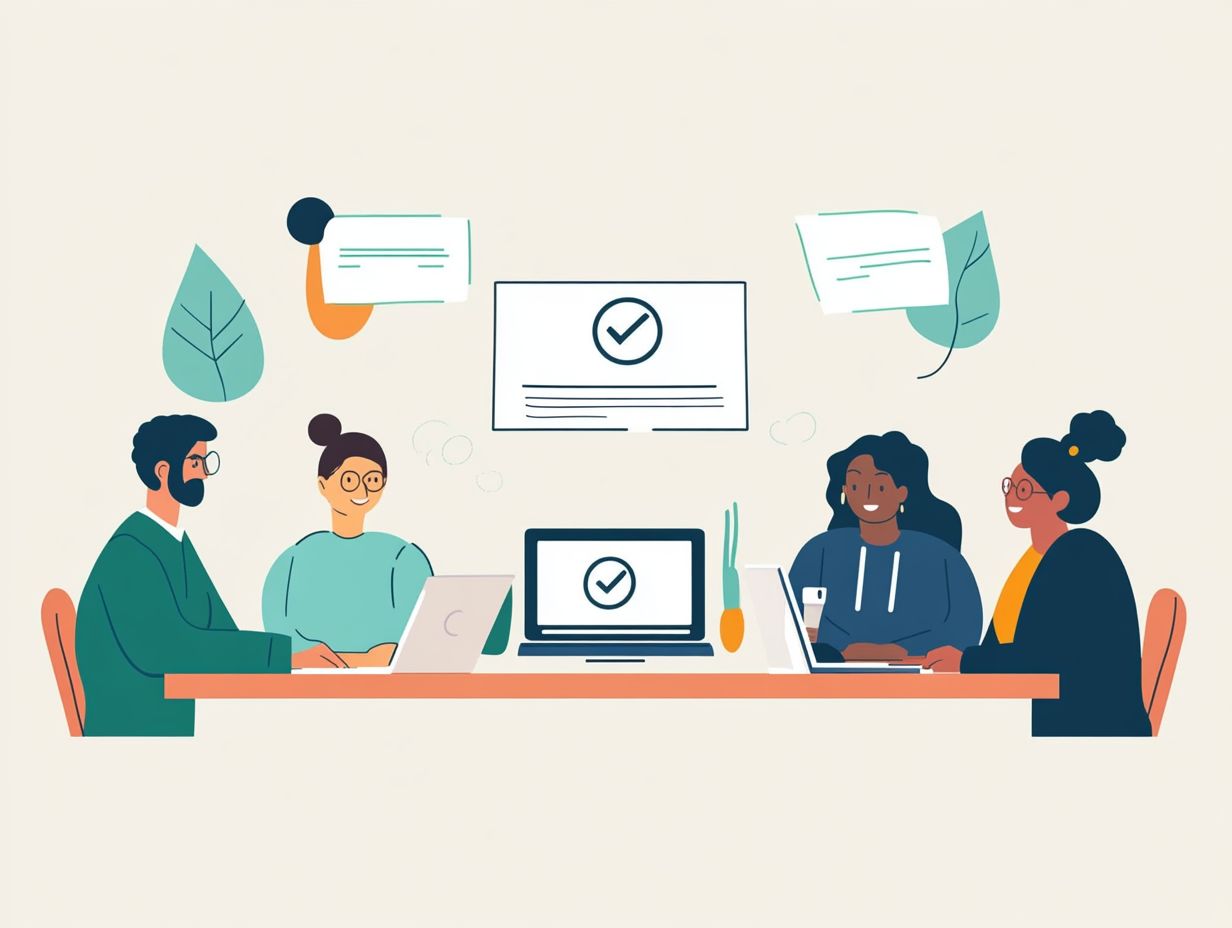
When considering alternatives to copyrighted material, you have several excellent options at your disposal.
You can source content that resides in the public domain, explore the wealth of resources under Creative Commons licenses, or craft original content specifically designed for educational purposes.
By doing so, you ensure strict adherence to copyright regulations while enriching your materials with valuable, compliant content.
Creating Original Content
Creating original content is an invaluable practice that nurtures your creativity and ensures you stay in line with copyright laws. By producing unique educational materials, you contribute to academic integrity and set a strong example for others.
As you engage in this creative process, delve into your thoughts and insights to significantly enhance your learning experience. Thinking critically and expressing your ideas in your own words not only bolsters your understanding but also fosters a deeper connection to the subject matter.
Implementing clear strategies like brainstorming sessions, collaborative projects, and proper citation practices helps you develop meaningful content while upholding ethical standards.
This commitment to originality enriches your knowledge and equips you with essential skills for your future endeavors.
Using Public Domain Material
Using public domain material enables you to incorporate works that have long since slipped out of copyright protection into your educational resources without the hassle of securing permission. This ensures that you re creating lawful copies without any risk of infringement.
This makes it easy to find valuable resources that can significantly enrich the learning experience, offering a diverse array of texts, images, and various media.
Public libraries and online archives, such as Project Gutenberg and the Internet Archive, are invaluable allies in this endeavor. They provide searchable databases brimming with literature, historical documents, and scientific literature.
By weaving these public domain works into your instructional activities, you can spark creativity and critical thinking in your students. They ll engage with authentic texts that showcase a multitude of voices and perspectives, enhancing their comprehension and fostering a deeper appreciation for cultural heritage.
Consequences of Copyright Infringement
The repercussions of copyright infringement can be serious, potentially exposing you or your institution to legal action if you fail to adhere to copyright laws.
This noncompliance can lead to substantial penalties and fines, significantly affecting educational budgets and tarnishing reputations.
Potential Legal Action
Potential legal action for copyright infringement can surface when a copyright owner believes their intellectual property rights have been compromised. This situation can trigger lawsuits and demands for damages, impacting you as the alleged infringer.
The copyright owner typically begins with a cease and desist letter a formal request asking you to cease the infringing activity. This communication clearly identifies the rights that have been infringed and outlines possible next steps.
If the issue isn t resolved amicably, the copyright owner may escalate matters to formal litigation by filing a lawsuit in court. This route can be lengthy and costly.
For educational institutions, grasping these legal avenues is vital. You need to navigate the complexities of copyright compliance to safeguard your interests while fostering a culture that respects intellectual property.
The consequences of infringement can lead to substantial legal repercussions and financial liabilities, underscoring the importance of proactive legal education and strict adherence to copyright laws.
Penalties and Fines

Penalties for copyright infringement can vary significantly based on the severity of the violation. Statutory damages, or set amounts charged as penalties for copyright violations, might range from hundreds to thousands of dollars, depending on the specifics of the infringement under copyright law.
These financial repercussions can become a considerable burden, especially for individuals who may unintentionally infringe upon copyrighted materials. Hefty penalties can quickly drain personal finances.
Educational institutions face similar risks. They are not immune to the consequences and may encounter significant legal fees and damage awards that strain their budgets. As these institutions increasingly share resources and materials digitally, one mistake can lead to serious trouble.
Ultimately, understanding these potential penalties underscores the importance of compliance, ensuring that creators’ rights are honored while also safeguarding those who rely on their work.
Preguntas Frecuentes
Qu es el copyright y por qu es importante al usar material legalmente?
El copyright es un tipo de protecci n legal otorgada a los creadores de obras originales, como literatura, m sica, videos e im genes. Asegura que el creador tenga el derecho exclusivo de utilizar y distribuir su obra y previene que otros la usen sin su permiso. Es importante entender las leyes de copyright para evitar repercusiones legales al usar material protegido por derechos de autor.
C mo puedo saber si algo tiene copyright?
En la mayor a de los casos, si una obra ha sido creada por otra persona y no est en el dominio p blico, es muy probable que est protegida por copyright. Puedes buscar un s mbolo de copyright ( ), el a o de creaci n y el nombre del propietario del copyright en el material. Sin embargo, siempre es mejor asumir que una obra est protegida por derechos de autor, a menos que se indique lo contrario.
Puedo usar material protegido por derechos de autor si le doy cr dito al creador original?
No, dar cr dito al creador original no te otorga el derecho de usar su material protegido por derechos de autor sin su permiso. Si bien reconocer la fuente es una buena pr ctica, no hace que sea legal usar el material sin la debida autorizaci n.
Qu es el uso justo y c mo se aplica al uso legal de material protegido por derechos de autor?
El uso justo es un principio legal que permite el uso limitado de material protegido por derechos de autor sin solicitar permiso al titular del copyright. Se aplica en situaciones espec ficas, como con fines educativos o de investigaci n, y se determina caso por caso. Sin embargo, es esencial entender que el uso justo es una defensa, y usar el material sin permiso a n puede resultar en consecuencias legales.
Puedo usar material protegido por derechos de autor si lo modifico o uso solo una peque a parte de l?
Modificar o usar una peque a parte de material protegido por derechos de autor no lo convierte autom ticamente en legal. A n se considera una infracci n de derechos de autor si la obra original es reconocible en la versi n modificada, y usar incluso una peque a parte de una obra protegida por derechos de autor puede violar los derechos del propietario. Es mejor buscar permiso del titular del copyright antes de usar cualquier parte de su obra.
Cu les son algunas alternativas legales para usar material protegido por derechos de autor?
Algunas alternativas legales para usar material protegido por derechos de autor incluyen obtener una licencia del propietario del copyright, usar materiales que est n en el dominio p blico o usar obras que hayan sido publicadas bajo una licencia de Creative Commons. Estas opciones permiten el uso legal de material protegido por derechos de autor, mientras se respetan los derechos del creador original.

